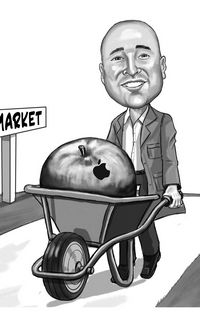Staying power
To be a leader in the high-yield market year after year requires co-ordination across sales, trading and origination, as well as strong financial sponsor relationships and the ability to switch between challenged credits and landmark acquisition financings. For doing just that, Bank of America Merrill Lynch is IFR’s North America High-Yield Bond House of the Year.
There was rarely a day that Bank of America Merrill Lynch was not in the market with a high-yield deal in 2013. It was lead-left on 81 transactions in the first three quarters of the year, and for the period mid-November 2012 to mid-November 2013, it had a market share of 10.2%, according to the Thomson Reuters data.
If those numbers are not impressive enough, the breadth of transactions it brought to the market definitely is.
The bank led everything from a US$25m add-on for Flexi-Van, a jumbo corporate M&A financing for Tenet Healthcare, a debt IPO for DreamWorks Animation and a dividend payment-in-kind toggle for PartyCity, to sponsor driven leveraged buyouts for the likes of Hub International.
It also took on more challenging deals for issuers like Noranda Aluminum and outdoor lifestyle retailer Quiksilver, for which it successfully printed a US$505m two-part deal in July through the tight end of talk on both tranches, despite a drop in the company’s margins and a challenging market backdrop following a back-up in Treasury yields.
That puts to rest any argument that the bank’s league table position, number two this year, is purely down to its lending relationships.
“We take pride that we can do any type of transaction,” said John Cokinos, who has since left BofA Merrill, but was the head of leveraged finance capital markets. “We don’t just do flow Double Bs or committed capital LBOs. We also do debt IPOs, positioning those stories well, and rescue financings.”
BofA Merrill’s distribution and trading platform has been consistently ranked number one by Orion Consultants over the past three years with aboutUS$1bn of high-yield bonds and US$600m of leveraged loans traded on a daily basis, according to Cokinos.
“There is no question. They are far and above everyone else on the Street,” said one high-yield investor.
Head-on risks
Among BofA Merrill’s most high-profile deals of the year was the US$4.6bn acquisition financing for Tenet Healthcare’s purchase of Vanguard Health Systems. It was the third-largest high-yield deal of the year, and included the largest Triple C tranche ever priced – a US$2.8bn senior note – which, at the riskier the end of the credit spectrum, is not always the easiest to sell, and therefore is more risky to underwrite.
BofA Merrill took those risks head-on, quickly stepping up to provide a 100% commitment on the debt when the deal was announced in June, successfully syndicating that risk and then coming up with the optimal structure for the company. That meant swapping initial plans for a Term Loan B for a US$1.8bn senior secured bond.
It was also the sixth deal that BofA Merrill led for Tenet since 2009 – high quality repeat busines.
But BofA Merrill didn’t stop there. Although leveraged buyout activity was not particularly strong in 2013, the bank was involved in most of the big sponsor deals, and not only for the biggest players such as TPG and Carlyle.
It was left-lead on the US$4.4bn leveraged buyout of Chicago-based insurance broker Hub International by Hellman & Friedman from Apax and Morgan Stanley, which at 7.5 times leverage was the most highly leveraged buyout since the financial crisis.
BofA Merrill also led the US$355m senior secured bonds that backed the US$600m buyout of teen clothing retailer Hot Topic by Sycamore Partners. It was the first bond ever issued by the sponsor, and was executed in tough market conditions in June. Despite printing wide of price talk, the deal was still well inside the cap rates.
Not all of the bank’s underwriting decisions were spot on, most notably for teen retailer rue21 on which it made a significant loss. But even on that, rivals said BofA Merrill was unlucky, caught out by worsening sales.
Neither did it shy away from risky PIK toggle structures, which saw a massive resurgence.
The US$285m PIK toggle issued by packaging company Bway in May was the only super holdco structure of the year, and also enabled private equity firm Platinum Equity to take out its entire US$270m equity contribution within six months of purchasing the business.
BofA Merrill’s leadership was proven countless times. “What we care about is having the left-lead position,” said Stephan Jaeger, head of high-yield capital markets at the bank. “And what ensures that is good ideas and good execution.”
To see the full digital edition of the IFR Review of the Year, please click here.
To purchase printed copies or a PDF of this report, please email gloria.balbastro@thomsonreuters.com


